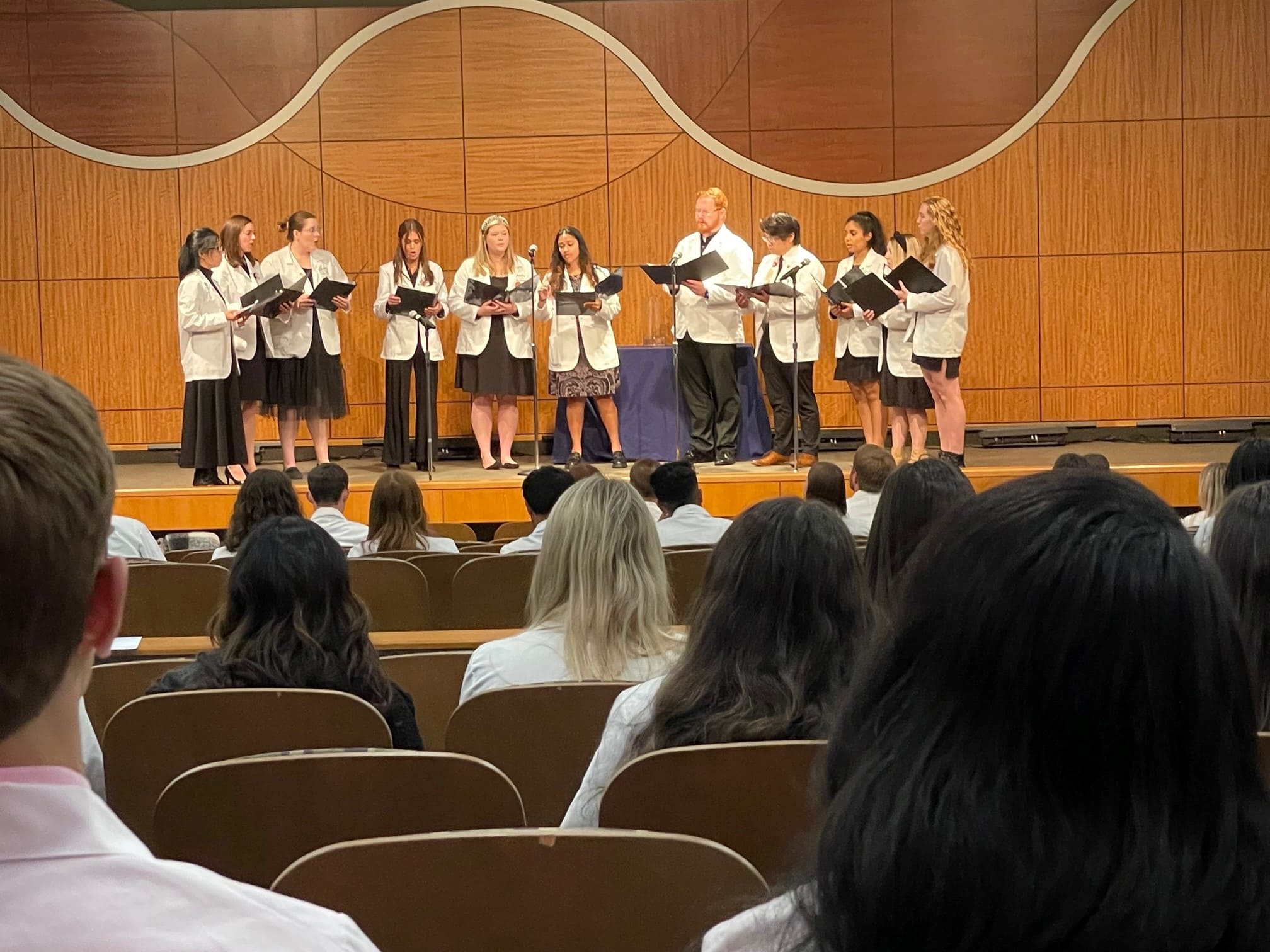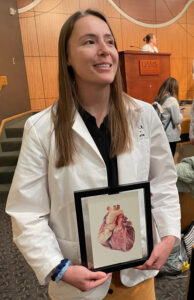First-Year Medical Students Pay Tribute to Those Who Donated Their Bodies to Science
| First-year medical students at the University of Arkansas for Medical Sciences (UAMS) gathered Nov. 14 in the Fred Smith Auditorium for a ceremony honoring those who donated their bodies to medical science.
Thanks to the anatomical donations, the Class of 2026 was able to study 37 bodies in small groups in the Human Structure class that marks the beginning of their medical education.
Each group of first-year students on the Little Rock campus studied the remains of one of 34 cadavers, while 17 first-year students on the northwest campus in Fayetteville studied three permanent specimens in the Department of Physical Therapy’s anatomy laboratory there. The remains of the cadavers are later cremated and returned to the family or buried, depending on the family’s wishes.
The Anatomical Donation Ceremony of Remembrance began with brief remarks from student Jared Canonigo, UAMS Chaplain Franklin Wells and student Bryan Strong. Then the group listened solemnly as student Jade Michael Matthews read a poem called “Knowing You” by JooRi Jun, who wrote it in 2012 as a medical student at Bastyr University in Seattle.
“I do not know all the paths you chose to walk down in life, but I have felt the fibers of all the muscles that carried you there,” the poem begins. “I do not know what made your heart burst with love, but I have pictured how the blood flowed through the four chambers of your heart.”
The poem ends with the words, “I do not know your name, but before you left you gave me permission to uncover the miracle of the human body through you. You gave me the gift of knowing you. Thank you.”
An ensemble of first-year students then gathered onstage to sing “Over the Rainbow,” before a representative of each of the 34 lab groups on the Little Rock campus walked across the stage and placed a white carnation in a vase, to commemorate each of the donors.
Three additional carnations were then added to the vase in honor of the donated bodies studied by the Northwest Arkansas first-year students.
Student Alexa Pearce, a former art history major, presented a framed watercolor she painted of a heart as a token of appreciation. The class memorial gift will join other artwork from first-year students that lines the walls outside the anatomy lab on the Little Rock campus.
“Finishing anatomy is certainly a milestone for all of us,” Pearce said, “but it’s one that wouldn’t be possible without the generous donations of these individuals. I hope that my artwork can serve as a symbol for the unique life paths that each of these individuals had and for the lasting impact that they will have on our journeys.”
David Davies, Ph.D., a professor in the College of Medicine Department of Neurobiology and Developmental Sciences who is the module director for the anatomy course, reminded the medical students that the donors — most of whom died while in their 50s, 60s, 70s and 80s — grew up in a world that differed in many ways from that in which the students have grown up.
He cited the influence of wars and the civil rights movement, as well as technological changes and major changes in the practice of medicine, as well as their personal experiences, all of which may have influenced their decision to donate their bodies.
“You saw that in the laboratory and just got a glimpse of it,” Davies said. “It might have been just the color of the nail polish that they were wearing, a pacemaker that they had or some other prosthesis, or tattoos.”
“By giving themselves up as a specimen or donor for your education, their families were also giving up part of the ceremonies that go along with grieving and resolution of the pain that they feel,” he said. “And so I think it’s important to remember their families and to honor them as well.

Students walk across the stage to place a carnation in a vase in remembrance of the donors, as their classmates look on.
“I think that what they did was burden you with an expectation that you would be good physicians, caring physicians and competent physicians, and then to carry that throughout your careers,” Davies said. “Thank you for your participation in the course and the professionalism that you’ve shown continually through the course.”

